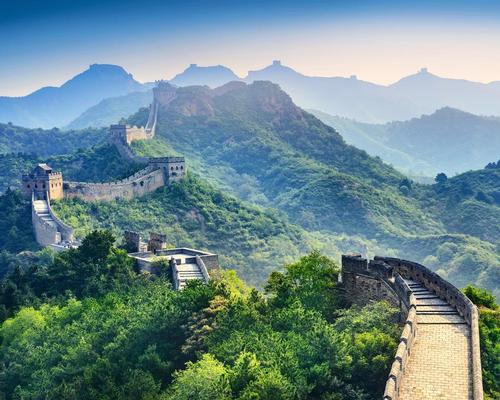13 Jun 2018
Chinese heritage bodies come together to protect Great Wall
BY Tom Anstey

A collection of 41 organisations across China have come together in efforts to better protect the country's Great Wall.
Led and initiated by the Chinese Academy of Cultural Heritage and the China Foundation for Cultural Heritage, the Great Wall Protection Alliance (GWPA) is made up of government departments, non-government organisations, research institutions, private companies and universities.
The group will aim to protect the famous Great Wall, which at a total length thought to be 21,196km (13,170mi), spans 15 provinces and is in-part covered by more than 600 different heritage bodies.
Many segments of the wall have entered a state of disrepair, having been used by nearby villagers – particularly in the 20th century – as a source of stones to rebuild houses and roads, while much of the wall has been lost to tourists illegally taking pieces as souvenirs. Parts have also been demolished to make way for various construction works.
In addition to protection and restoration, the GWPA will come together to discuss how to best make use of its resources and how to develop a better sightseeing experience for the attraction. Among its plans, the Alliance will integrate cultural relics and tourism resources, hold academic meetings and training programmes, and promote further exchanges with overseas organisations.
Speaking following the group's formation, Gu Yucai, deputy director of the State Administration of Cultural Heritage, expressed his hope that the Alliance would "focus on protection", as well as carry out research studies and increase public participation through social networking.
A 2012 report by the State Administration of Cultural Heritage stated that 22 per cent of the original Ming Great Wall has disappeared, while 1,961km (1,219m) of the overall wall has been lost. Natural elements are also an issue with erosion a constant threat in some parts due to sandstorms. Many western sections of the wall are constructed from mud, rather than brick and stone, meaning they are also susceptible to erosion.
Inner Mongolia is home to the longest and most historically important stretch of the Great Wall, spanning 11 different periods in Chinese history dating back to fourth century BC. The regional government of Inner Mongolia wants to restore the most-damaged sections of the wall by 2020, placing priority on those with the greatest historical significance.
"Through this alliance, we can contribute our experience and ideas," said Zhang Jun, one of the group's leaders. "We also hope that we can effectively feed public opinion to all members to better protect the Great Wall."
Close Window